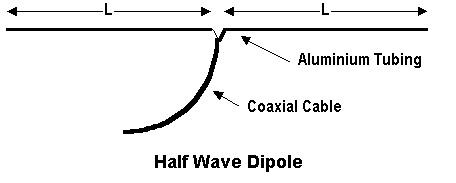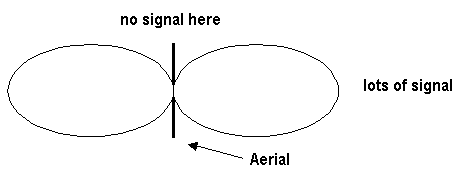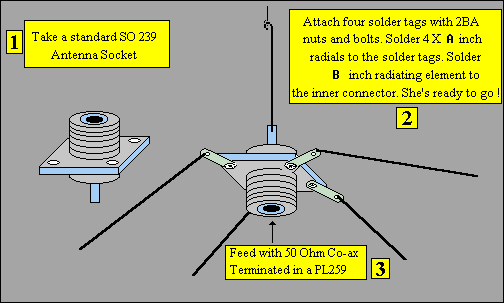|
|
|
Preferred type of aerial is affected by several factors, but mostly by transmitting site. In the middle of the area you want to cover you'll need an omnidirectional aerial which transmits equally all ways, while outside your coverage area you can beam the signal in with a directional aerial. Before going on air get a low VSWR by adjusting the position of the aerial and any of it's adjustable pieces. Aim for 2:1 or less. Use low power into the aerial when tuning it up and making adjustments. If you were using 100's of watts and a bit of the aerial came off in your hand the VSWR could be so bad as to blow the final transistor. For the same reason check the DC continuity of the aerial with an ohmmeter before plugging it in, to be sure it's what it's meant to be, either a short circuit or an open one, depending on the aerial type. A dipole shown below should be an open circuit.
Dummy
Load:
Dummy load is not actually an aerial, it dissipates all transmitted power in
a form of heat. So what's the use of it? Well, it is presents an ideal match
for an output of your transmitter (usually 50ohms). Since all (almost) power
is transverted into heat, there won't be any interference to your neighbors
while you do tuning and testing. This is what dummy load is usually used for,
testing and tuning transmitters. If you donít have dummy load, you can build
them easily from BNC RF connectors and the proper wattage/value of CARBON resistor(s).
DO NOT USE WIREWOUND OR METAL FILM RESISTORS! A useful one can be constructed
with 4 -220 Ohm 1/4 watt resistors in parallel (220/4 = 55 Ohms) with center
conductor to outershell (ground) of an RF connector. That is pretty close to
50 Ohms and if you use 1/4 watt resistors you get a nifty 2 Watt Dummy Load
for testing your equipment without an antenna.
The simplest possible aerial for VHF is known as the Half-wave Dipole:

Both elements can be either aluminum/copper tubes or wire. The lengths of each dipole, L, is calculated from your transmitting frequency by this formula:
L = 71/F (meters), where F is operating frequency in MHz
A half-wave dipole used vertically is omnidirectional, but when used horizontally it has a figure of eight coverage like this (wives from top) :

Note: A dipole needs a Balanced Feed as it is symmetrical, but a coaxial cable
provides an Unbalanced Feed. What's needed is a Balun (BALance to UNbalance)
transformer. These can be made out of bits of coaxial cable. If you don't
do this power will be radiated from the feeder. You CAN use it without BALUN,
but you might get lower-than-expected performance and unusual radiation pattern
due to interactions with the feeder.
I recommend this aerial to beginners, as your knowledge broadens go for one of the following babies:

|
Frequency
|
Radiator
- B
|
Radials
- A
|
|
108MHZ
|
660
|
693
|
|
108MHZ
|
648
|
720
|
|
108MHZ
|
713
|
749
|
|
108MHZ
|
792
|
819
|
If you have SWR meter, leave a bit longer radiator and adjust it later by cutting to achieve minimum SWR.